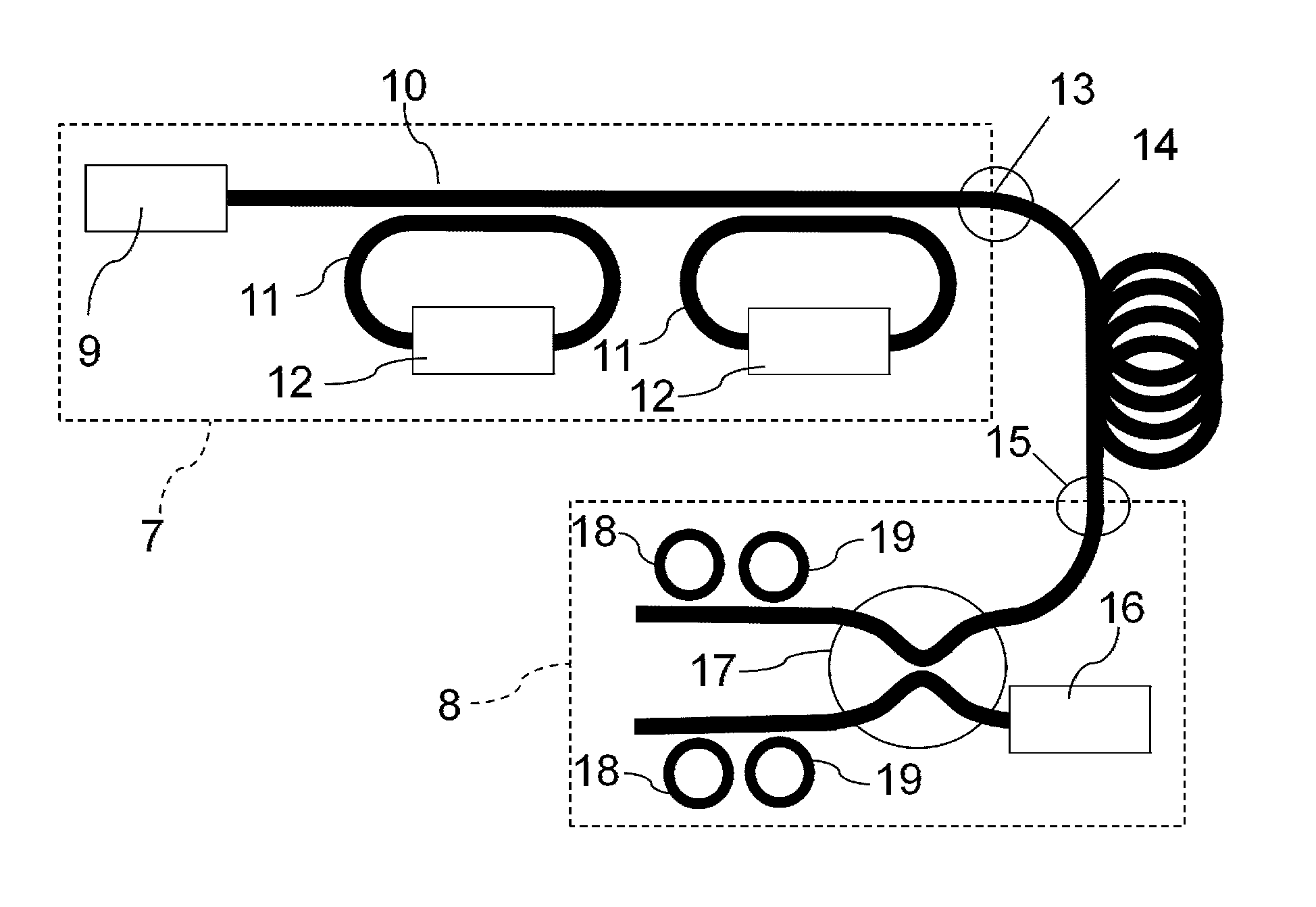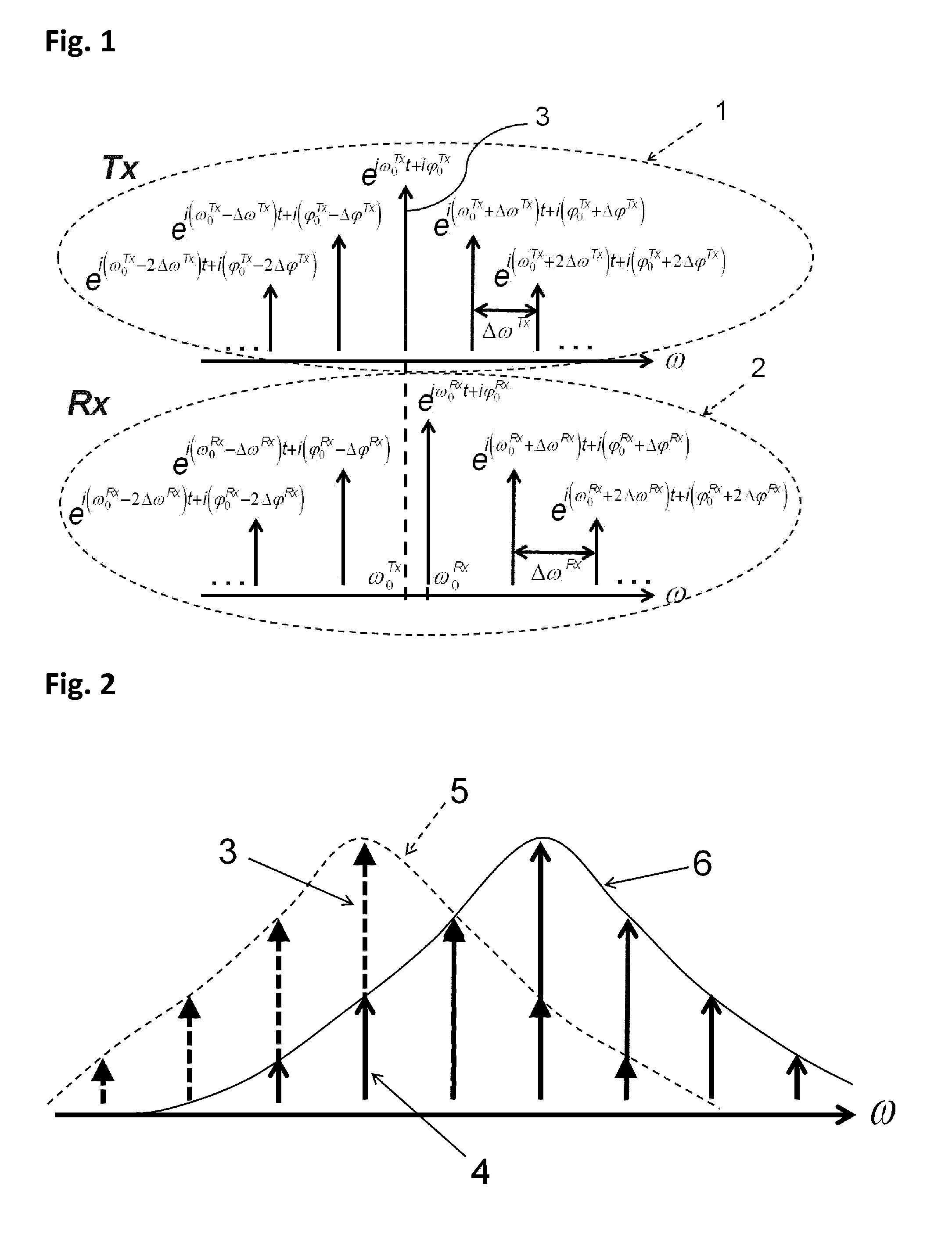WDM telecommunications link with coherent detection and optical frequency comb sources
a technology of optical frequency comb and telecommunications link, which is applied in the field of optical link combining, can solve the problems of phase and frequency lock, difficulty in realization, and mode locking of comb components, and achieve the effect of facilitating the demodulation of a large number of coherently detected optical channels and reducing the frequency of residual intermediate frequencies
- Summary
- Abstract
- Description
- Claims
- Application Information
AI Technical Summary
Benefits of technology
Problems solved by technology
Method used
Image
Examples
Embodiment Construction
[0078]In FIG. 1, a transmitter Tx mode-locked frequency comb spectrum 1 and a receiver Rx mode-locked frequency comb spectrum 2 are shown. A frequency comb component 3 of the transmitter Tx frequency comb has a frequency ω0Tx and a phase φ0Tx. The transmitter Tx comb has a free spectral range (also called frequency offset of the transmitter comb) ΔωTx and a phase offset ΔφTx. Similar notation hold for the receiver Rx comb. The vertical axis represents the power level of the frequency comb components. The difference between the frequencies of the frequency comb components of index 0 of the two combs is illustrated.
[0079]In FIG. 2 the frequency comb components 3 of the transmitter Tx comb are represented with one type of arrow (dashed, filled arrow tip) and, frequency components 4 of the receiver Rx comb are represented with another type of arrow (continuous). As shown, the two combs are locked to each other, but the envelope functions 5 and 6 of the transmitter Tx and receiver Rx com...
PUM
 Login to View More
Login to View More Abstract
Description
Claims
Application Information
 Login to View More
Login to View More - R&D
- Intellectual Property
- Life Sciences
- Materials
- Tech Scout
- Unparalleled Data Quality
- Higher Quality Content
- 60% Fewer Hallucinations
Browse by: Latest US Patents, China's latest patents, Technical Efficacy Thesaurus, Application Domain, Technology Topic, Popular Technical Reports.
© 2025 PatSnap. All rights reserved.Legal|Privacy policy|Modern Slavery Act Transparency Statement|Sitemap|About US| Contact US: help@patsnap.com



